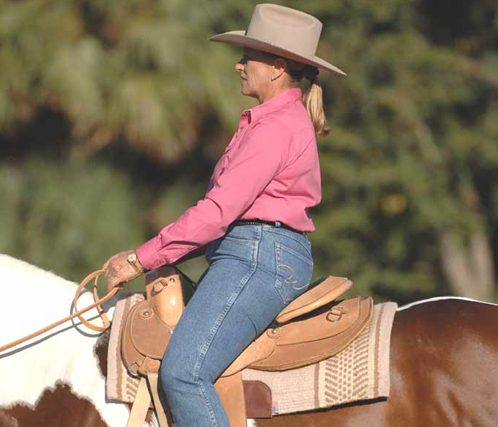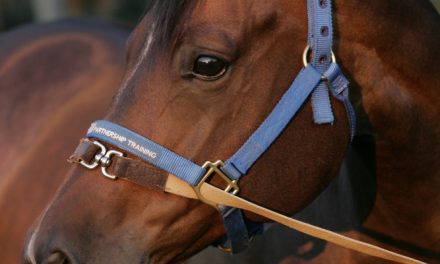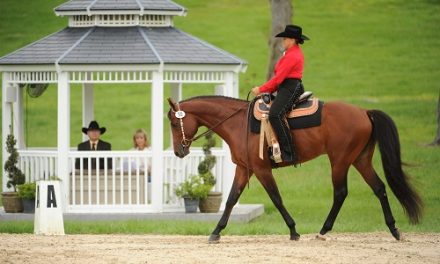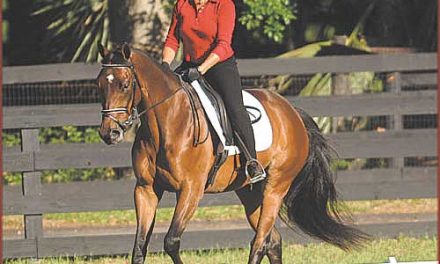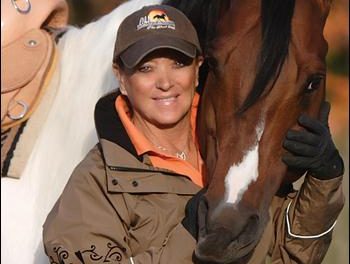Palm Partnership Training™
Building a Partnership with Your Horse
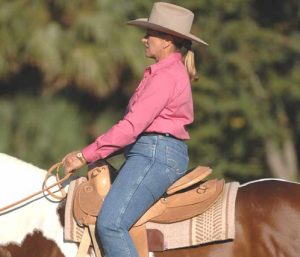 We’ve been discussing tips (and in the next part of this series) for teaching your horse three in-hand maneuvers that are extremely important for the horse’s future from beginning work under saddle to advanced training. They are the forehand turn, turn on the haunches, and yielding. By teaching the horse these maneuvers on the ground, he will already be familiar with them when asked to do them under saddle.
We’ve been discussing tips (and in the next part of this series) for teaching your horse three in-hand maneuvers that are extremely important for the horse’s future from beginning work under saddle to advanced training. They are the forehand turn, turn on the haunches, and yielding. By teaching the horse these maneuvers on the ground, he will already be familiar with them when asked to do them under saddle.
You will learn how to use your sight on the ground to evaluate the horse’s response to your commands and keep his body straight position during the maneuver. You will be able to apply these skills when you execute these maneuvers under saddle.
Now I will give tips for teaching your horse “yielding to the left”.
For those readers who are just joining this series, I’ll repeat some important tips to prepare you to teach this lesson. As with all of in-hand lessons, outfit your horse with a properly fitting halter, with a longe line attached, and leg protection. For this lesson attach the longe line on the halter’s side ring on the side you are leading.
Like other in-hand lessons, I recommend introducing it in a smaller secure area like an enclosed paddock or round pen. I’ll describe this lesson as if teaching it in a small paddock. Once your horse is solid in this lesson, you will be able to execute it anywhere.
When starting this lesson, practice it in the same spot each time. By doing this, the horse will be familiar with what you will be asking him to do. Once he is consistent, add additional spots until he can perform it anywhere within the training location you are using.
In-Hand Lesson: Yielding-Left
I consider my good friend and Olympic dressage rider Jane Savoie one of today’s top female equestrians. Through this series I’ve been introducing each maneuver with a definition from her wonderful books Cross Train Your Horse and More Cross Training. I want readers to appreciate how important each of these maneuvers are to their horse’s training, no matter what discipline they ride.
Jane describes yielding as a: “ …lateral movement in which the horse’s inside front leg and inside hind leg pass, and cross in front of, his hind legs. His spine is straight and he is [slightly] flexed at his poll in the opposite direction from the way he is moving”.
In other words, with the horse staying straight the forehand and hindquarters work together so he can move laterally. This maneuver builds on the lesson learned in the forehand turn, that is, moving away from pressure.
I recommend using a simple pattern to properly position your horse for yielding. Find a section of straight fence line that ends in a left hand corner or bend. Stand so that you are leading your horse from his left side with him positioned between you and a fence. You will be “tracking” or moving to the horse’s left.
Walk him straight along the fence line and turn him through the left hand corner. Continue turning away from the fence, making a ½-circle to the left, until you are positioned in the middle of the paddock and facing in the opposite direction than you started. Ask him to whoa, making sure he is straight and square. Change longe line or lead and your position to the horse’s right side. You will be working from the right side for yielding left following a diagonal line back toward the fence. Stand close to your horse, facing him, between the middle of his neck to his shoulder. Hold the excess longe line in your left hand
Extend your right hand to lightly grasp the halter’s side ring, at the horse’s jaw, with just enough contact to guide the head. Do not hang on the halter or steer his head from underneath it! During the maneuver, use this hand to encourage him to move forward and very slightly bend his head toward you (away from the direction he will be traveling).
Extend your left hand to apply the aid or “cue” for this maneuver to move the hindquarters laterally. The “target area” for this cue the same location we used in the turn on the forehand: the lower half of the horse’s barrel within a zone approximately 10 inches behind his heartgirth. This is where your lower leg contacts the horse’s lower barrel when your foot is in the stirrup.
Be consistent where you apply this cue! The cue is not given up high on the flank, up on his sides, or back on his hip. Look at your horse and find the target area before staring this lesson. If your horse is sensitive to this touch, you may need to gently stroke him from his withers down to his shoulder to get him accustomed to the contact. Apply the cue using a cupped hand with a pulsating pressure, rather than poking the horse with your knuckles or fingers.
Start the maneuver by extending your right hand and giving a “cluck” to ask the horse to walk forward and straight. If he is first learning this maneuver, very slightly bend his head toward you as you apply the cue with your left hand. Later, as he becomes more schooled in this maneuver, he will be able to do it with little or no bend. Use your peripheral vision to see if his right front and hind legs are crossing over the left front and hind legs while he stays straight in his topline. If he does not stay straight, bring him forward and straighten him using the right hand on his halter, before asking again.
When the horse moves laterally, lighten the pressure and follow his movement as he moves diagonally toward the fence. If he does not respond vibrate the pressure with the right hand, to keep him moving forward with a slight bend, and with the left hand to ask him to move his hindquarters laterally. When he reaches the fence, finish the maneuver by asking him for a few steps forward and straight alongside the fence. Ask him to whoa and praise him.
Teaching this maneuver is as much about learning how to coordinate your actions as a handler as teaching your horse to move laterally to your commands.
Avoid the common problem of standing too far away from the horse and not moving with him. In this position the handler will lag behind her horse and pull him out of the straight-line body position. Be precise where the cue is applied. If it is given too far behind the target area or too high on the flank, the horse will have the tendency to swing his hindquarters out or resist, rather than move laterally. Don’t look down at the horse’s feet, but use your peripheral vision to monitor the horse’s topline to see if he is staying straight at the same time you note if he is crossing his front and hind legs properly.
Your Next Step…
The goal is to keep the horse forward and straight when teaching yielding. His forehand (head, neck, front legs, shoulders) should be straight with his body and hindquarters working together to move laterally. Always start this maneuver by walking forward and straight first, before asking for any lateral movement!
Here are the key points to remember when teaching “yielding”:
1. Look up at the topline… so you can evaluate your horse’s body position and responsiveness to your cues.
2. Keep the horse forward…by extending your arm and moving with him. If you find that you are moving too much sideways, pick a point on the fence or put up a marker in a diagonal line from your starting point. Keep your horse moving forward and laterally as you aim for this point.
3. Always face your horse and move with him…if you are asking for yielding to the left, cross your right leg over your left (and vice versa) to help you move with him.
4. Watch so his hips don’t swing out away from you… this is a telltale sign that you are cueing him incorrectly.
5. Relax… it takes some practice to coordinate both you and your horse’s movements in this maneuver. Be patient. When beginning this lesson only do a few steps of this maneuver at a time, the walk straight ahead for a few steps, stop and reposition the aids for the maneuver, and ask again. Build up until you can easily yield from the middle of the paddock back to the fence. With practice your horse will yield on command without the need for the fence. Praise your horse when he responds to your request.
Until then, follow your dreams…

